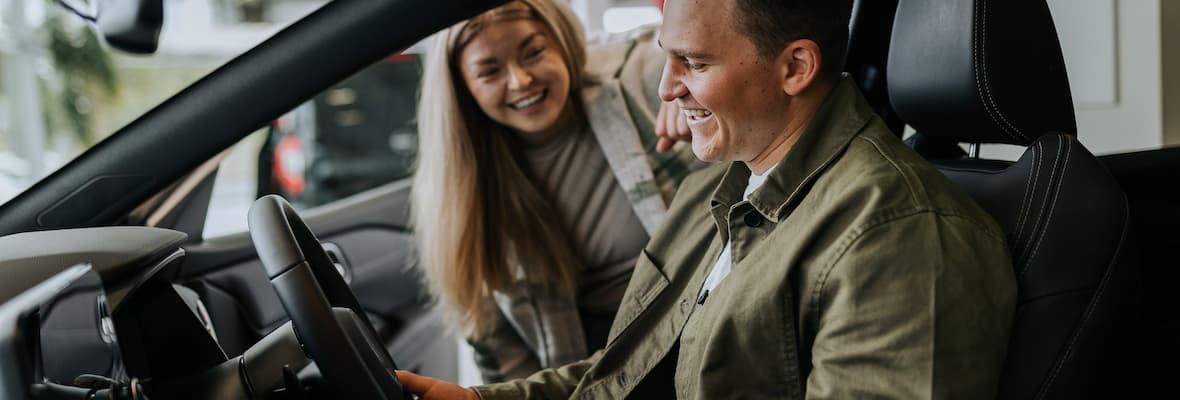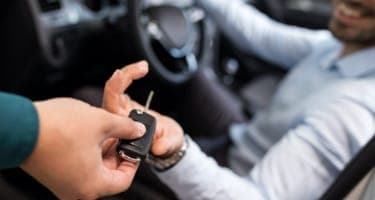Whether you're planning to buy a new or used car, you'll probably narrow your choices to cars that suit your needs and are within your budget.
But what about car value?
Searching for a car that holds its value over time is beneficial when it comes time to sell that same car several years later.
Depreciation (a decrease in value) is an unavoidable part of car ownership. And your car will likely decline in value when you drive off the dealership lot.
To help improve your understanding of car depreciation, the following guide includes:
What is depreciation?
Car Depreciation Calculations
Finding the Current Value of Your Car
Factors That Impact Car Depreciation
How to Slow Down Depreciation
What is depreciation?
In simple terms, depreciation is the amount of value your car loses over time due to wear and tear, market demands, the age of the car and its mileage.
Depending on a new car's model, it can lose 10-15% of its value once you drive it off the dealership’s lot.[1]
Car depreciation rates can vary between new and used cars. However, newer cars can have a higher rate of depreciation.
This means the resale value can be less the longer you wait to sell your car (after you initially bought it).
Car Depreciation Calculations
There are several ways to calculate depreciation.
Here are the two methods used by the Australian Tax Office:
Prime Cost Method
Diminishing Value Method
While these are used for business tax purposes, they can also be used to gain a general estimate of the depreciation for your vehicle, outside of tax purposes.
Understanding how to calculate car depreciation rates each year can help you make informed decisions about when to sell your vehicle.
You can also use the Australian Taxation Office's depreciation and capital allowances tool as a car depreciation calculator or estimator.
Prime Cost Method (Straight Line)
According to the ATO, the prime cost method assumes the value of a depreciating asset decreases evenly over its lifespan.
Under the straight-line depreciation method you can claim a fixed amount each year based on the following formula:
Asset’s cost × (days held ÷ 365) × (100% ÷ asset’s effective life)
According to the ATO, the effective life of a car for an individual taxpayer is eight years and days held can be up to 366 for a leap year.
Diminishing Value Method
The diminishing value method assumes the value of a depreciating asset decreases more in the earlier years of its lifespan.
Under this method, the following formula is used:
Base value × (days held ÷ 365) × (200% ÷ asset’s effective life)
According to the ATO, the effective life of a car for an individual taxpayer is eight years.
Days held can be up to 366 for a leap year.
Which factors impact car depreciation?
Depreciation is generally caused by wear and tear from daily driving which can impact how well your car functions over time.
Here are the factors that impact car depreciation.
Car Purchase Price

The price of a car can affect its depreciation rate, with newer and higher-priced models often depreciating more quickly than their cheaper base models.
Brand
Strong well-established brands with a good reputation are likely to hold more market value while a smaller or less well-known car brand may depreciate faster.
This is why many Aussies choose to purchase from recognisable and trusted brands such as Mazda, Toyota, Hyundai, Ford and Mitsubishi, to name a few.
Car Types
In-demand car types such as sports utility vehicles (SUVs) have started to depreciate at lower rates, and retain more value on the resale market.[2]
Here are some car makes with lower depreciation rates:[3]
Toyota Corolla Ascent Sport Hybrid - 9.45%
Toyota HiLux SR5 - 12.97%
Toyota RAV4 GX FWD - 13.26%
Toyota Corolla Ascent Sport Petrol - 13.56%
Toyota HiLux Workmate Double Cab 4x4 - 14.71%
While luxury vehicles tend to depreciate at a faster rate. They can be costly to maintain and don't hold much resale value on the used car market.
Here are some luxury car makes with higher depreciation rates:[3]
Tesla Model 3 Performance AWD - 50.86%
BMW 5 Series M550i xDrive Pure - 49.28%
Volvo XC60 Recharge AWD - 47.34%
Volvo XC90 Recharge AWD - 45.92%
Mercedes-Benz GLE53 AMG Coupe - 45.77%
Condition

Keeping a vehicle in good condition is crucial for maintaining its value over time.
Regular maintenance and prompt repairs will improve performance and decrease depreciation. And overlooking minor issues can lead to a significant decrease in value.
Make sure you keep important documents such as servicing records, history of accidents and who previously owned the car.
Age
Up-to-date car models represent the latest example of a manufacturer's product and hold the most value (at that time). But as cars age, they can cost more to maintain especially if they need car parts that are no longer manufactured.
Kilometres

Your car is designed to last for some time but the more wear and tear to it, the more the value decreases.
While a different car brand or a fuel-efficient car might depreciate differently, the one thing they all have in common is an odometer and a way to track how much a car is driven over time.
Car Accidents

If you have an accident, your car's value can decrease. Even if the vehicle has been expertly repaired and looks similar to how it was before the accident, it can likely still be worth less overall.
Potential buyers may doubt whether the repairs were performed properly using the original manufacturer's parts.
A car that has never been in an accident is more appealing in a competitive market.
Car accidents are recorded in a car's vehicle history report. This report can be accessed by prospective buyers alongside your car's accident history.
How to Slow Vehicle Depreciation
While depreciation is an unavoidable part of car ownership, you can slow down the process.
Regular Maintenance
Regular maintenance and cleaning help to keep your car in good condition and over time reduce depreciation.
Scheduled maintenance and servicing reduces wear and tear on tyres, the body, the engine and other mechanical parts.
A logbook with consistent servicing stamps is a great way to record ongoing maintenance that add to a higher resale value.
Limiting Mileage
Limiting long-distance trips (where possible) will help to keep your mileage low.
Often the lower your odometer reads, the higher your car's resale value will be.
Keeping a vehicle's mileage low will not only improve its efficiency but also help to offset increasing depreciation.
Used Cars
While a brand-new car can still depreciate in its first year, it may be worth buying a used car still in good condition.
If you buy a used car the depreciation is slower but you'll still have to keep up with maintenance and repairs.
Key Takeaways
Understanding how depreciation works is an important part of buying, selling, and maintaining your vehicle.
By learning how to calculate depreciation, understanding how it impacts your car's resale value, and how to slow down depreciation, you'll be able to make the most of your car ownership experience.
Part of this experience is ensuring you have the right precautions in place if something goes wrong.
With Budget Direct you can get Comprehensive Car Insurance that covers loss or damage to your car and any damage it causes to other people's cars and property.






